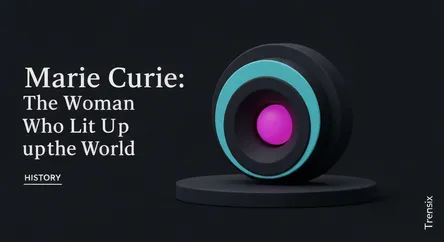History
Marie Curie: The Woman Who Lit Up the World

Discover Marie Curie, the pioneering physicist and chemist who discovered two elements and became the first person to win two Nobel Prizes.
What is it?
Marie Skłodowska Curie (1867-1934) was a Polish and naturalized-French physicist and chemist who conducted groundbreaking research on radioactivity. A trailblazer in a male-dominated field, she is famous for discovering two elements, polonium and radium. Curie was the first woman to win a Nobel Prize, the first person and only woman to win the Nobel Prize twice, and the only person to win in two different scientific fields—Physics in 1903 and Chemistry in 1911. Her work fundamentally changed our understanding of the atom.
Why is it trending?
Marie Curie remains an icon of scientific perseverance and female intellectual achievement. Her life story, marked by overcoming significant societal barriers, continues to inspire. During World War I, she developed mobile radiography units, known as "petites Curies," to provide X-ray services to field hospitals, saving countless lives. Her work laid the foundation for modern nuclear physics and chemistry and had immense medical applications, including the development of radiation therapy for treating cancer. The institutes she founded in Paris and Warsaw are still major centers of medical research today.
How does it affect people?
The legacy of Marie Curie's work is profound. Her discoveries paved the way for modern oncology and the use of radiation to treat cancer. The development of X-rays in medicine, which she championed, is a standard diagnostic tool that has benefited billions. Her research was a critical step towards harnessing nuclear energy. Beyond her scientific contributions, Curie's story is a powerful symbol of what women can achieve, breaking barriers and inspiring future generations of scientists, particularly women, to pursue careers in STEM fields.